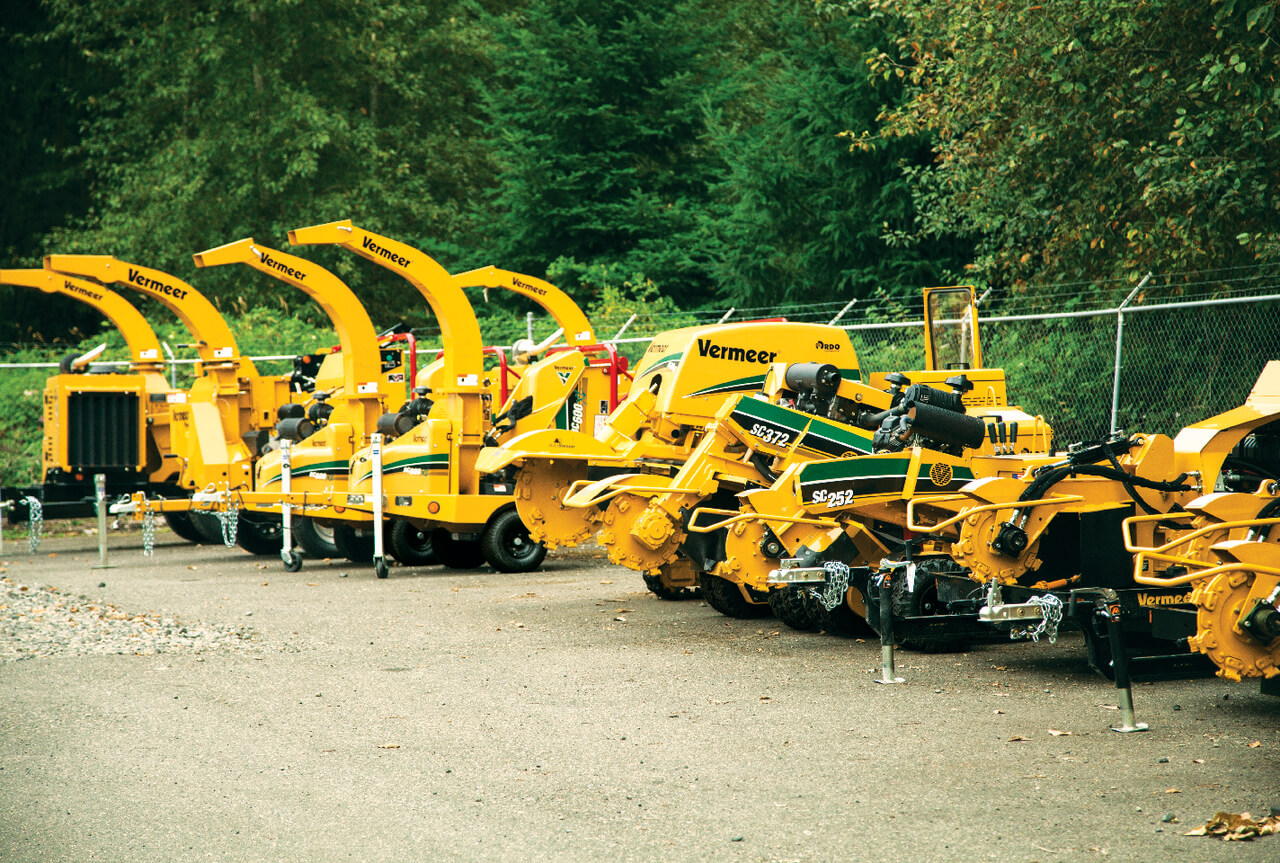Sometimes you just need a few reasons to justify your actions — especially when it comes to renting versus buying tree servicing equipment. While there are certainly pros and cons to both renting and buying, it pays to take the time to evaluate your company’s current situation and capabilities.
The initial cost is a major factor in the decision process, but it’s not the only one. Here are a few things you should bear in mind before deciding when to buy and when to rent:
Basic considerations
- Expected equipment life
- Expected use in hours per year
- Expected rentals per year
Cost to own/operate
- Initial purchase cost
- Depreciation
- Labor
- Parts and maintenance costs per year
- Insurance costs per year
- Total cost to own
Cost to rent
- Rental rate
- Pickup/Delivery per rental
- Labor
- Total to rent
Your financial situation
While this might seem like one of the most obvious factors, your current and future financial plans still tend to be overlooked in the decision-making process. It’s also beneficial to look beyond your current situation and project your costs over several months or years.
“It’s very important to consider your business plan in the next three to five years,” said Vermeer Sales Manager Todd Roorda. “Do you plan to expand or shrink your business? That’s going to be a huge factor in if you need to do short-term renting, long-term renting or buying.”
While buying may be a larger one-time financial outlay, the cost of renting can add up quickly, and over a long period of time can end up costing you more (for example, if the equipment isn’t being used for the entire rental period). Plus, when you own equipment, there’s a return on investment when you sell.
Cost of ownership versus cost of renting
As outlined above, it’s essential to take time to crunch the numbers and compare the long-term and short-term value when renting versus owning. With ownership comes maintenance and operating costs, insurance and other fees, and those costs obviously vary from machine to machine. While renting is generally an inclusive cost, consider that your rental fees include a marked-up purchase price and cost of ownership factors, so the rental companies are guaranteed to make profits.
Consider speaking with a financial advisor about the possible tax implications (or advantages) of buying or renting equipment for your business — you may be able to avoid paying capital gains tax when you sell and buy equipment.
“Anyone with the help of a sound accountant should be able to easily walk through these considerations and make the decision to continue to rent or buy,” Roorda said.
Project or job task frequency
If it’s a short-term job, or you need a specialized piece of equipment for a one-off job, then renting usually makes more sense. However, if you’re working on a longer project, or if you’ve got several jobs on the horizon, then buying will easily pay for itself as rental costs add up quickly the longer a job goes on. Plus, multipurpose equipment (mini skid steers, forklifts, trucks, etc.) can be used for various projects and situations.
“Basically, when your utilization outweighs most additional factors, it just makes more sense to buy that piece of equipment,” Roorda said.
For more information and articles about managing your tree care fleet, visit the Tree care, rental and landscape blog.
Vermeer, the Vermeer logo and Equipped to Do More are trademarks of Vermeer Manufacturing Company in the U.S. and/or other countries. © 2017 Vermeer Corporation. All Rights Reserved.
